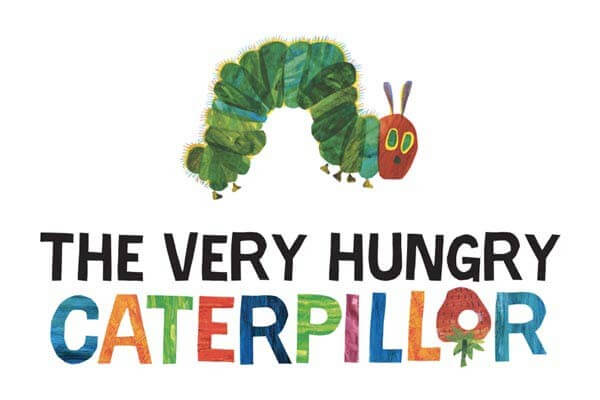The Gift Of Tears Healing From The Inside Out
Introduction — When Tears Become Prayer
There are moments when words run out and only tears remain.
In those moments, something sacred happens — the soul speaks in a language the tongue cannot.
Throughout Scripture and Christian tradition, tears are not weakness.
They are grace. They soften the heart, wash away bitterness, and open space for God’s healing presence.
This guide explores:
- The biblical and spiritual meaning of tears.
- How God heals through grief, lament, and prayer.
- Practical ways to release emotion safely and faithfully.
- The link between tears, trauma release, and spiritual growth.
- Hope and support resources across Aotearoa New Zealand.
If you find yourself crying often — or unable to cry at all — this reflection is for you.
1. Tears in the Story of God
1.1 God Sees Every Tear
“You have kept count of my tossings; put my tears in Your bottle.” (Ps 56:8)
In the ancient world, mourners sometimes kept small glass tear bottles as a sign that grief was seen.
The psalmist uses that image to reveal God’s compassion: not one tear is wasted.
1.2 Jesus Wept
When Jesus saw Mary and Martha grieving for Lazarus, “Jesus wept.” (John 11:35) — the shortest verse in Scripture, yet one of the most powerful.
Christ’s tears show divine empathy.
God doesn’t watch suffering from afar; He enters it.
1.3 The Tears of the Saints
From St Monica weeping for her son Augustine, to St Ignatius of Loyola moved to tears in prayer, the saints saw tears as a gift of grace — a cleansing of the soul that brings humility and renewed love.
2. Why Tears Matter
2.1 Emotional Healing
Tears are part of how God designed our bodies to process pain.
Modern psychology confirms that crying releases stress hormones and restores balance — yet long before science, Scripture taught that sorrow
can lead to life.
“Those who sow in tears shall reap with shouts of joy.” (Ps 126:5)
2.2 Spiritual Healing
In repentance or lament, tears open the soul to mercy.
They break the hard ground of pride, allowing grace to flow.
2.3 Communal Healing
The Church is called to weep with those who weep (Rom 12:15).
Tears shared become compassion multiplied.
In Māori and Pasifika cultures, communal grieving (tangi) is sacred — a sign that sorrow belongs to the whole community, not just
the individual.
3. When We Can’t Cry
Sometimes trauma, suppression, or exhaustion dries the tears.
If you feel numb, don’t shame yourself. God can heal even frozen grief.
Begin by naming the loss: a person, a dream, a sense of security.
Ask gently: “Lord, what am I holding inside?”
If emotions arise, let them come. If not, simply sit in stillness.
Professional counselling can help the body relearn safety so tears can return.
(See NZ resources below.)
4. Tears as Prayer
4.1 Lament — Sacred Honesty
The Psalms of lament give permission to cry out:
“How long, Lord? Will You forget me forever?” (Ps 13:1)
Lament isn’t lack of faith — it’s faith that refuses to give up.
Bring your sorrow before God and leave it there.
4.2 Intercession — Weeping for Others
Compassionate tears are a form of intercession.
When you feel moved by another’s pain, let those tears become a prayer:
“Lord, have mercy on them.”
4.3 Eucharistic Tears (Catholic Context)
At Mass, tears may come quietly during prayer or reception.
Early theologians saw this as the soul’s recognition of grace — God touching hidden wounds through sacrament.
5. The Physiology of Grace
Science calls tears “a release of stress hormones.”
Faith calls them a baptism of the heart.
The two meet beautifully: God works through body and spirit together.
After a deep cry, the body relaxes; breathing slows.
This physiological calm can become space for prayer, as the Holy Spirit soothes what words cannot reach.
“The Spirit Himself intercedes for us with groans too deep for words.” (Rom 8:26)
6. How to Allow Healing Tears
| 1. Find Safety | Sit or kneel in a quiet place. If possible, light a candle or play soft worship music. | Safety tells the nervous system it’s okay to feel. |
| 2. Invite God | Pray: “Jesus, I’m here. You can touch what hurts.” | Opens space for encounter. |
| 3. Notice Emotion | Don’t push tears away. If they come, breathe slowly. | Tears = release, not weakness. |
| 4. Rest After | After crying, rest or journal. Drink water. | Integrates healing in body. |
| 5. Share if Needed | Talk with a friend, pastor, or counsellor. | Keeps sorrow from isolation. |
7. Biblical Examples of Healing Tears
7.1 Hannah — Tears of Intercession
Childless and misunderstood, Hannah “wept bitterly” before the Lord (1 Sam 1:10).
Her tears became prayer, and hope was born.
7.2 Peter — Tears of Repentance
After denying Christ, Peter “wept bitterly.” (Lk 22:62)
His tears were not despair but the beginning of restoration.
7.3 Mary Magdalene — Tears of Love
At the tomb, she wept until Jesus spoke her name (John 20:16).
Tears often precede recognition — the moment we finally see Christ again.
8. When Tears Flow from Trauma
Trauma tears differ from ordinary emotion; they release pain stored deep in the nervous system.
If memories or flashbacks arise, pause and ground yourself:
- Feel your feet on the floor.
- Name five things you can see.
- Whisper: “Jesus, stay with me.”
You may also need professional trauma therapy.
In NZ, ask your GP for a referral or contact organisations such as 1737 (free 24/7 counselling) or Lifeline 0800
543 354.
9. From Tears to Joy
“Weeping may stay for the night, but joy comes with the morning.” (Ps 30:5)
Healing tears prepare the heart for joy — not denial of sorrow, but peace beyond it.
Joy after tears is gentler, humbler, more compassionate.
Jesus promised:
“You will weep and mourn … but your grief will turn to joy.” (John 16:20)
10. Practical Faith Rhythms for Healing
| Daily Check-In | Ask “How is my heart?” Write one sentence to God. | Morning or evening journal. |
| Breath Prayer | Inhale: “Lord Jesus Christ.” Exhale: “Have mercy on me.” | 3 minutes daily. |
| Scripture Reading | Choose psalms of lament & hope (Ps 6, 34, 126). | Read aloud; pause at phrases that move you. |
| Community | Attend worship even if you cry. Others’ faith holds you. | Share with trusted friend after. |
| Acts of Mercy | Serve someone in pain — a meal, a note, a visit. | Love turns grief into compassion. |
11. When Tears Become Too Much
If crying becomes constant, exhausting, or linked with thoughts of hopelessness, please seek help.
In New Zealand:
- Call 111 if in immediate danger.
- 1737 — Free call or text for trained counsellors 24/7.
- Lifeline 0800 543 354 / text 4357.
- Samaritans 0800 726 666.
- Te Haika 0800 745 477 (Māori support).
Asking for help is a holy act of trust. Even Jesus let Simon carry His Cross.
12. The Sacrament of Tears
Tears are the water of rebirth.
They cleanse sin, release trauma, and baptise the soul into empathy.
St Catherine of Siena called them “wine of angels” — a sign of love ripening into maturity.
When you cry in prayer, imagine each tear as a drop of living water — God’s Spirit washing your heart.
13. How to Pray with Tears
Prayer for Healing:
“Lord Jesus, You wept with those who wept.
Receive my tears as prayer.
Wash away what needs to go; water what needs to grow.
Heal my heart from the inside out,
until Your joy flows where pain once lived.
Amen.”
14. From Brokenness to Compassion
Once healed, tearful people often become healers.
Your empathy becomes Christ’s gift to others.
Those who have wept deeply can comfort deeply.
“The God of all comfort … comforts us in our troubles, so that we can comfort those in any trouble.” (2 Cor 1:3-4)
Your tears may water someone else’s faith.
15. A Prayer of Thanksgiving for Tears
Thank You, Lord, for the gift of tears — for sorrow that softens, for grief that opens the heart, for mercy that flows like
rain.
Let every tear I cry be received by You as prayer, and return as compassion for others. Amen.
16. Resources & Next Steps
- Download: “Healing Prayers for the Brokenhearted” PDF — daily prayers & reflection journal.
- Join: Weekly Prayer Email Series — short reflections for inner healing.
-
Explore: conversationscounselling.nz
for faith-sensitive support in Aotearoa.
- Visit: your local parish or church for grief support or healing services.
Gentle CTA: Before you sleep tonight, say:
“Lord, thank You for the gift of tears. Heal me from the inside out.”
Conclusion — When Tears Become Grace
Tears are not the enemy of faith; they are faith’s purest form.
They acknowledge pain yet trust that love is still stronger.
In every tear, God is present — listening, cleansing, transforming.
When the time comes, He will wipe every tear from your eyes (Rev 21:4), but until then He keeps each one as treasure.
Let them flow. They are holy water from the heart.
Disclaimer:
This article offers pastoral and spiritual guidance only. It is not a substitute for medical or psychological care. If you are in crisis or
unsafe, please contact a qualified professional or the New Zealand helplines listed above.



.jpg)









.jpg)





.jpeg)





.jpeg)



.jpeg)








.jpeg)



.jpeg)

.jpeg)

.jpeg)

.jpeg)




.jpeg)
.jpg)

.jpeg)






.jpeg)
.jpeg)




.jpeg)





.jpeg)


.jpeg)

.jpeg)

.jpeg)

.jpeg)







.jpeg)
.jpeg)
.jpeg)





.jpeg)



.jpeg)






.jpg)
.jpeg)









.jpg)


ulva-Logo.jpg)




.jpeg)



.png)















.png)
























